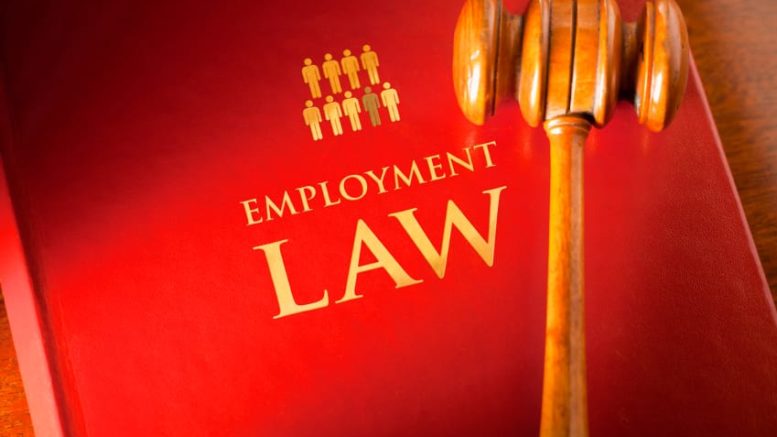
Three Private Members’ Bills expanding rights for parents and carers received Royal Assent on 24 May 2023. When in force, they will provide for:
- the right to paid leave where an employee’s new-born baby requires specialist neonatal care;
- protection from redundancy during and for a period after the end of pregnancy, maternity leave, adoption leave and shared parental leave; and
- a statutory unpaid leave entitlement for employees caring for a dependent who has a long-term care need.
Employers only need to keep a watching brief at this stage as all three Acts require implementing regulations to flesh out the new protections. These have not yet been drafted and are not expected to come into force before April 2024 at the earliest. Once these are finalised, employers will need to update internal policies and procedures to reflect the new rights and will also want to consider whether to enhance the rights, for example by continuing normal pay during carer’s or neonatal care leave or allowing longer periods of leave. Employers wishing to implement policies earlier may want to ensure they at least match the new rights, to the extent details are available, to minimise the need to make changes in the future. (We have included below details from the government’s plans as set out in earlier consultation documents and press releases, although of course there is no guarantee that these plans remain current.)
Neonatal Care (Leave and Pay) Act
- This will provide a ‘day one’ right to neonatal care leave for employees whose baby spends at least 7 continuous days in neonatal care (of a medical or palliative kind to be specified in regulations) starting either immediately or within the 28 day period after the day of birth. The leave will be in addition to existing statutory leave entitlements such as maternity and paternity leave.
- The regulations implementing the new right must provide for a minimum of one week’s leave. The government recently confirmed its intention to provide for up to 12 weeks’ leave; the government’s 2019 consultation suggested that the entitlement will be to one week’s leave per full week the child spends in neonatal care (up to the 12 week maximum).
- The employee will be able to take the leave either while the child is receiving neonatal care or within a specified period afterwards. This period will be set by regulations but must be a minimum of 68 weeks starting from the child’s birth. This will enable an employee on other forms of statutory parental leave such as maternity leave to add their neonatal leave entitlement on to the end of those other entitlements (as stopping maternity leave to take neonatal leave would mean losing the rest of the maternity leave entitlement).
- The regulations will also set out the required parental relationship, how leave can be taken, notice and evidential requirements. The government’s consultation response suggested leave may need to be taken in blocks of one or more weeks and that one week’s notice would normally be required, with only very short, informal notice for leave taken very soon after the admission to neonatal care.
- Statutory neonatal care pay will be payable during neonatal leave to employees with at least 26 weeks’ continuous service and earnings not less than the lower earnings limit. The consultation suggested that this would be at the statutory flat rate and employers will be able to reclaim a proportion of it from HMRC by reducing their national insurance contributions (as for statutory maternity pay).
- Parents taking neonatal care leave will have similar rights and protections as for other relevant family-related leave, including protection from detriment and dismissal for taking leave and rights to return to work.
- Kevin Hollinrake MP stated in Parliament that the new neonatal leave and pay entitlements are expected to come into force in April 2025 and approximately seven statutory instruments will be delivered ‘in due course’ to implement this.
Protection from Redundancy (Pregnancy and Family Leave) Act
- This Act comes into force on 24 July 2023 but, again, will require regulations to be implemented and these are unlikely to be in force before April 2024. Employees on maternity leave, adoption leave or shared parental leave already have the right to be offered a suitable alternative vacancy, if available, before being made redundant – in effect, they have priority over other redundant employees in relation to vacancies. The new Act allows for the extension of these existing redundancy protections to pregnant employees, those who have recently suffered a miscarriage (prior to notifying the employer of their pregnancy), and those who have recently returned from maternity leave, adoption leave or shared parental leave.
- The regulations will need to set out the length of the period of protection after miscarriage or leave, and the start of protection for pregnancy. The government’s press release in October 2022 suggests that protection will start from when a woman tells her employer she is pregnant and continue for at least 6 months after the pregnancy or maternity leave has ended; this may be framed as a fixed period of 18 months from birth (“to ensure that a mother returning from a year of maternity leave can receive 6 months additional redundancy protection”). The press release suggests that the 18 month window (from birth) could also apply to shared parental leave.
- The press release stated that the government intends to work with the Pregnancy and Maternity Discrimination Advisory Board to update guidance for employers.
- Once these new rights are in force, employers will need to review their redundancy processes to ensure managers identify all priority employees and look for all potentially suitable vacancies across the organisation and group companies (bearing in mind the ability for roles to be carried out remotely where appropriate); the impact of more priority status employees on other ‘at risk’ employees may also require sensitive handling.
- This enables regulations to be made to give employees at least one week’s unpaid leave per year in order to provide or arrange care for a dependant with a long-term care need. The right will be a ‘day one’ right.
- The Act defines a dependant as someone who is a spouse, civil partner, child or parent of the employee; or someone who lives in the same household as the employee (except as a boarder, employee, lodger or tenant); or someone who reasonably relies on the employee to provide or arrange care. The dependent will have a long-term care need if they have an illness or injury (whether physical or mental) that requires, or is likely to require, care for more than three months; or they have a disability for the purposes of the Equality Act 2010; or they require care for a reason connected with their old age. The government’s 2021 consultation response suggested that a long-term care need may not be required in certain situations such as terminal illness.
- Regulations will set out the amount of leave (and whether it is per dependant or per employee), when it can be taken, notice requirements and what activities will count as providing or arranging care. The government’s consultation response suggested that leave may be taken flexibly, in either individual days or half days, up to a block of one week (five working days); that employees will need to give notice of twice the length of the leave being requested plus a day; and that employers will not be able to refuse a leave request but will be able to postpone it where they consider that the operation of their business would be unduly disrupted. The response also indicates that permitted activities may include providing personal support, helping with official or financial matters, accompanying someone to medical and other appointments, or providing care for someone who reasonably depends on the employee for care while their primary unpaid carer is taking respite.
- Employees will self-certify entitlement. The regulations may also prohibit employers from requiring employees to supply evidence in relation to a request (and a government press release suggests this prohibition will be adopted).
- Employees taking carer’s leave will have similar rights and protections as for other relevant family-related leave, including protection from detriment and dismissal for taking leave and rights to return to work.
- Regulations are not expected to be in force before April 2024.


